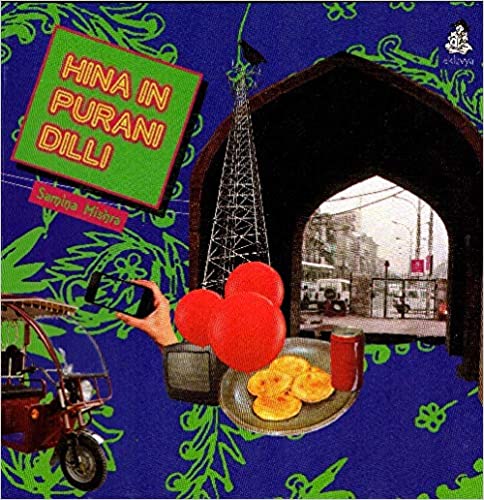Bharati Jagannathan
HINA IN PURANI DILLI
By Samina Mishra (pp. 60, `165.00)
GUTHLI TO PARI HAI
Text and illustrations by Kanak Shashi (pp. 24, `65.00)
ZIDDI SHANNO
Text by Sima/Seema. Illustrations by Sharvari Deshpande
(pp. 14, `45.00)
GOPI GAVAIYYA BAGHA BAJAIYYA
By Upendrakishore Ray Chowdhury. Translated from the original Bengali by Laltu. Illustrations by Prashant Soni (pp. 36, `85.00)
RICKSHAWALI LADKI
Text by Mitali Perkins. Translated from the original English by Susheel Joshi. Illustrations by Jamie Hogan (pp. 64, `60.00)
 All published by Eklavya, Bhopal
All published by Eklavya, Bhopal
Samina Mishra’s Hina in Purani Dilli takes the reader on a fantastic journey through the by-lanes of the old city of Delhi. The book weaves together, with a documentary lens, history, geography and sociology as it goes from Hina’s school housed in a medieval haveli to her home, another old haveli inhabited by numerous branches of her ancestral family of zardozi workers. After school, Hina helps her mother with housework before proceeding to a tutor’s where she learns both the art of zardozi and the complexities of the Koran. The book explores the social space of Old Delhi, from the relative freedom of rooftops where boys fly kites and men train homing pigeons while girls can chatter and gossip, to the more regulated world below where little Raisa who loves her short hair, an unexpected, welcome side-effect of a bout of typhoid, knows she cannot keep it that way, that she must conform.
While I might see this excellent book—with its rich and evocative photographs—as a window into ‘lives other than my own’, to paraphrase the dedication, it is even more valuable for bringing these stories and the children to whom they belong into the mainstream of children’s literature. Certainly a book that richly deserved re-publication, as I believe this edition from Eklavya to be; however, the publishing information should mention the same, including the date of the first edition.
Guthli to Pari Hai by Kanak Shashi tries similarly to mainstream the story of a boy who would rather be a girl. The darling of her family, a talkative, artistic child who loves cycling and climbing trees, Guthli puts on her elder sister’s new clothes on Dipavali instead of the boy’s clothes which have been bought for her. The sister is understandably angry, and the rest of the family upset; the mother tries to explain to Guthli that s/he is a boy and must dress and behave like one. Immensely saddened, Guthli becomes withdrawn and talks only to her chickens and flowers till, one day, her mother brings her a ‘fairy’ frock and says she loves her the way she is, the way she wants to be. The illustrations, also by Kanak Shashi, are attractive and do not give away the ‘surprise’ in the plot before the words tell us.

